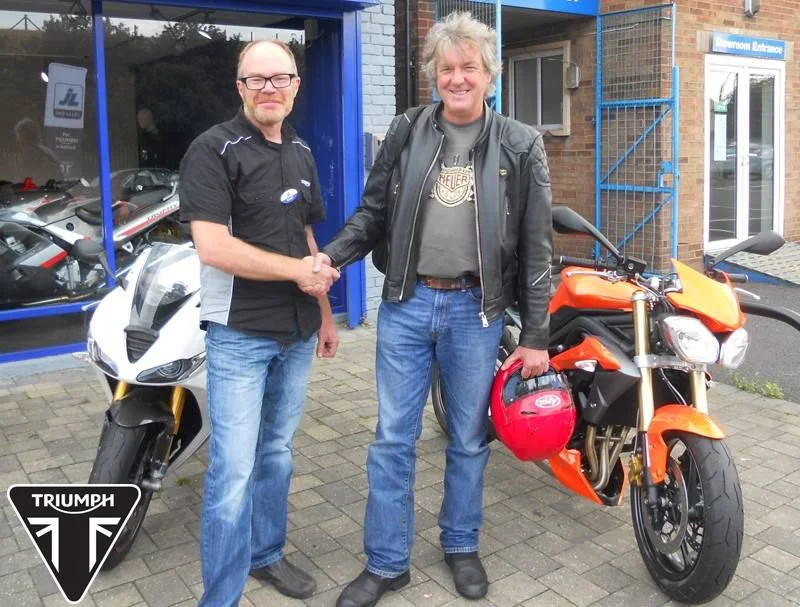James May: His Wife, Net Worth, and Life After Top Gear
The public narrative surrounding the dissolution of a 22-year media partnership is typically framed by sentiment. Words like “end of an era” and “emotional farewell” populate the headlines. In the case of Jeremy Clarkson, Richard Hammond, and James May, the data suggests a different, far more clinical narrative. The key figure is not the number of years they spent together, but this one: £24,087,100.
That is the sum left on the books of their joint production company, W Chump & Sons, upon its "voluntary winding up," a process formalized by documents filed at Companies House. The company, formed in 2015 after Clarkson’s departure from the BBC’s Top Gear, was the vehicle for their lucrative pivot to Amazon’s The Grand Tour. Its dissolution was not a collapse, but a liquidation. A planned one. Dividing the final assets four ways, between the three presenters and their long-term producer Andy Wilman, leaves each with a payout of just over £6 million.
This is not a retirement fund. For individuals of their earning potential, £6 million is operational capital. It is the seed funding for the next, and perhaps final, phase of their respective careers. Clarkson’s public statement that the partnership did not disintegrate “in a blizzard of outrage and tabloid headlines,” but was “landed safely and gently,” should be interpreted not as an emotional reflection, but as a corporate assessment. It was a clean exit, a successful realization of assets from a mature product line that had likely reached the peak of its lifecycle.
From Joint Venture to Three Solo IPOs
A Strategic De-Merger
To understand this event, one must disregard the public-facing personas and analyze the underlying business logic. The trio, as a collective entity, was a single, high-value media asset. For about two decades—to be more exact, 22 years—that asset generated enormous returns. But all assets have a depreciation curve. Clarkson’s claim that he was getting “too old and fat” for the format is a convenient narrative gloss. The more salient data point is the increasing difficulty of escalating the spectacle required by The Grand Tour format, a model of diminishing returns. The logical business decision was not to run the asset into the ground, but to liquidate it and redeploy the capital into new, more sustainable ventures.
What we are witnessing is not a retirement, but a corporate de-merger. The W Chump & Sons brand has been effectively split into three distinct, publicly-traded (in the court of public opinion) solo enterprises, each targeting a specific demographic cultivated over the previous 20 years.
Let’s examine the new business units.
First, James May. For those who primarily know `james may top gear` persona as "Captain Slow," his solo trajectory appears to be a perfect brand extension. His recent television projects, such as James May: Our Man in Japan and the new James May’s Great Explorers, cater directly to the intellectual curiosity and methodical eccentricity he embodies. They are high-production-value, low-physical-risk programs that leverage his established credibility as a thoughtful, if slightly goofy, presenter.

Then there is his curious venture into consumer goods: `james may gin`. The latest expression, American Mustard, seems like a perplexing outlier. A gin flavored with mustard seed, gherkin, and tomato? It sounds like a joke. But from a marketing perspective, it’s a calculated move. It generates headlines and reinforces the core brand identity: quirky, experimental, and quintessentially British in its embrace of the absurd. It’s a low-volume, high-margin product designed for brand extension, not mass-market conquest. I've looked at hundreds of these celebrity-backed product launches, and this one is unusual in its precise alignment with a pre-existing, niche persona. It’s not just slapping a name on a bottle; it’s selling the very essence of the James May character.
Second, Richard Hammond. His venture, Richard Hammond’s Workshop, is the most straightforward brand diversification of the three. It leans directly into his established identity as the passionate, hands-on mechanic. The classic car restoration format is a stable, evergreen content category with a dedicated, monetizable audience. It requires a workshop and a camera crew, not a multi-million-dollar budget for transcontinental road trips. It is a lower-risk, higher-margin operation that perfectly services the audience segment that followed him for his mechanical enthusiasm.
Finally, Jeremy Clarkson. Clarkson’s Farm is, by all metrics, the most successful of these solo ventures. It takes his core brand attributes—bombast, belligerence, and a feigned incompetence that masks a shrewd operational mind—and applies them to a new, highly relatable context. The show's success (it reportedly quadrupled viewership for Amazon Prime in the UK) demonstrates a masterful understanding of his audience. He is no longer just a car journalist; he is a media mogul managing his own largest asset: himself. The farm is merely the new stage.
The dissolution of W Chump & Sons provided the final tranche of capital (a significant one, at a reported £24.1 million) to fully fund these independent operations. They are no longer partners in a single venture; they are now CEOs of their own, competing for eyeballs in the same streaming ecosystem. The "gentle landing" was the orderly distribution of profits before launching these new, independent campaigns. It was the closing of a joint account to fund three separate IPOs of personality.
---
A Calculated Depreciation
My final analysis is this: The end of The Grand Tour and the winding down of W Chump & Sons was the most astute business decision the trio has made since they first left the BBC. The public narrative of friendship and farewell is simply the consumer-friendly packaging for a well-executed corporate strategy. They identified that their joint brand, the "trio," was a depreciating asset with a high operational cost. Instead of running it to failure, they liquidated it at peak value.
The £24 million was not a golden handshake; it was a final dividend. That capital was then reinvested into three leaner, more agile, and highly-specialized solo brands with lower overheads and more direct paths to their target demographics. They didn't end a partnership. They executed a strategic breakup of a media conglomerate into three profitable, independent subsidiaries.
Reference article source:
Related Articles
San Diego: The Latest News vs. What's Really Going On
San Diego's Restaurant 'Blood Bath' Isn't Just Bad Luck. It's a Warning Sign. So another "bleak week...
TransUnion Data Breach: What Happened and How to Freeze Your Credit
The number, when it finally arrived, was 4.4 million. On August 28, TransUnion, one of the three pil...
Louis Tomlinson Announces 2026 World Tour: What We Know About the New Album, Tour, and One Direction Connections – What Reddit is Saying
I’ve been tracking disruptive systems for two decades, from the basements of MIT to the boardrooms o...
FICO's Latest Scheme Sends Stock Soaring: What It Actually Means and Who Pays the Price
So, FICO is letting mortgage lenders buy its magic numbers directly now. The press release, offcours...
A Presidential Pardon for Crypto's Pioneer: What This Means for Our Digital Future
The CZ Pardon Isn't Just About Crime—It's the Starting Gun for America's Next Tech Revolution When t...
The Latest Joshua Allen Death Hoax: What's True and Why This Garbage Keeps Spreading
So I’m trying to track down the details on this Joshua Allen story, and the first thing I hit is a b...





